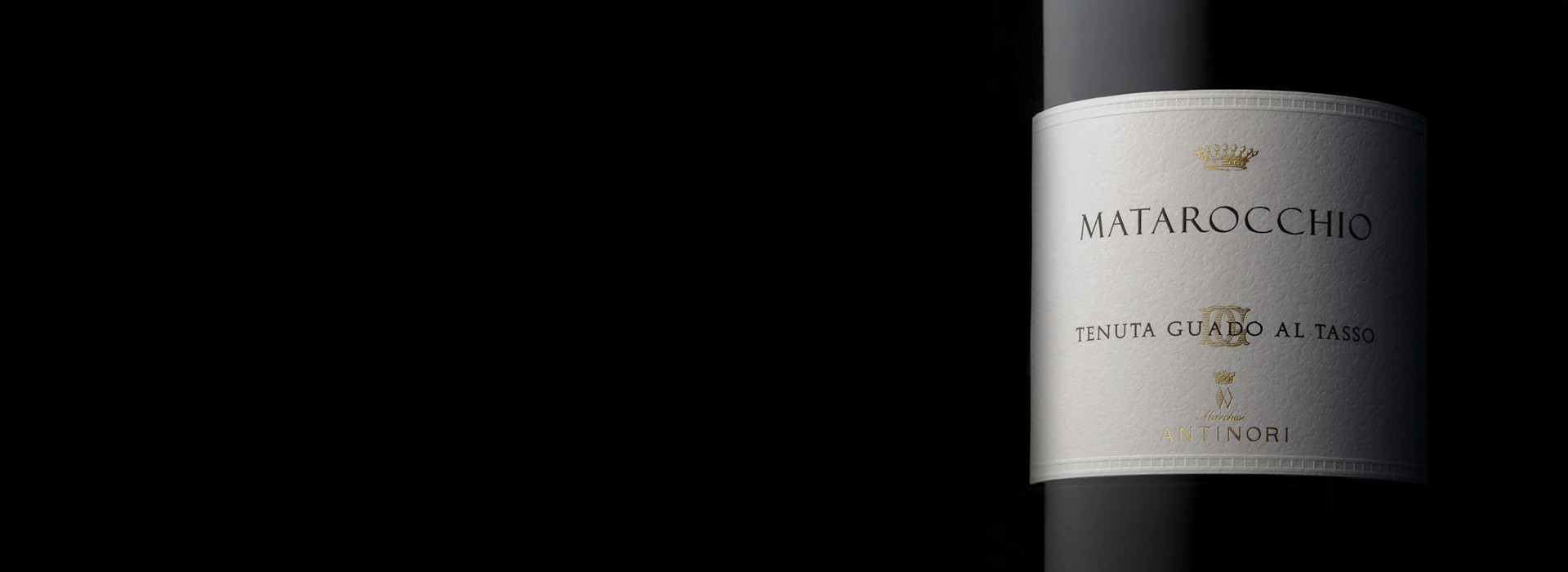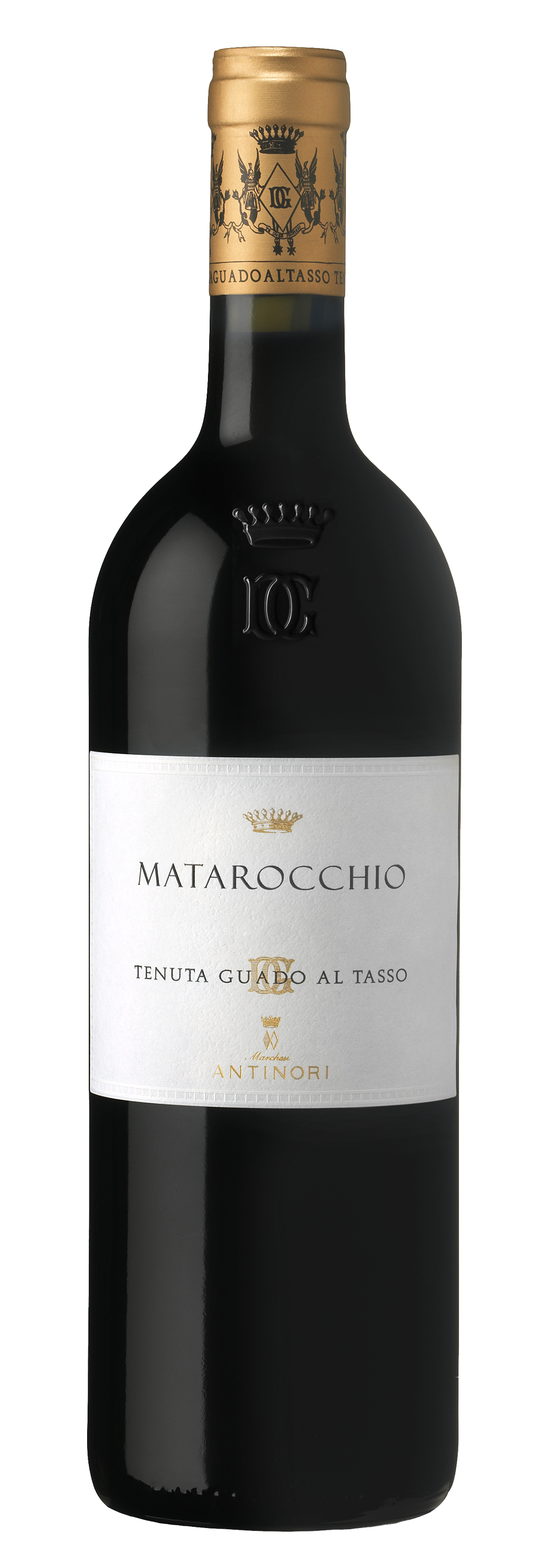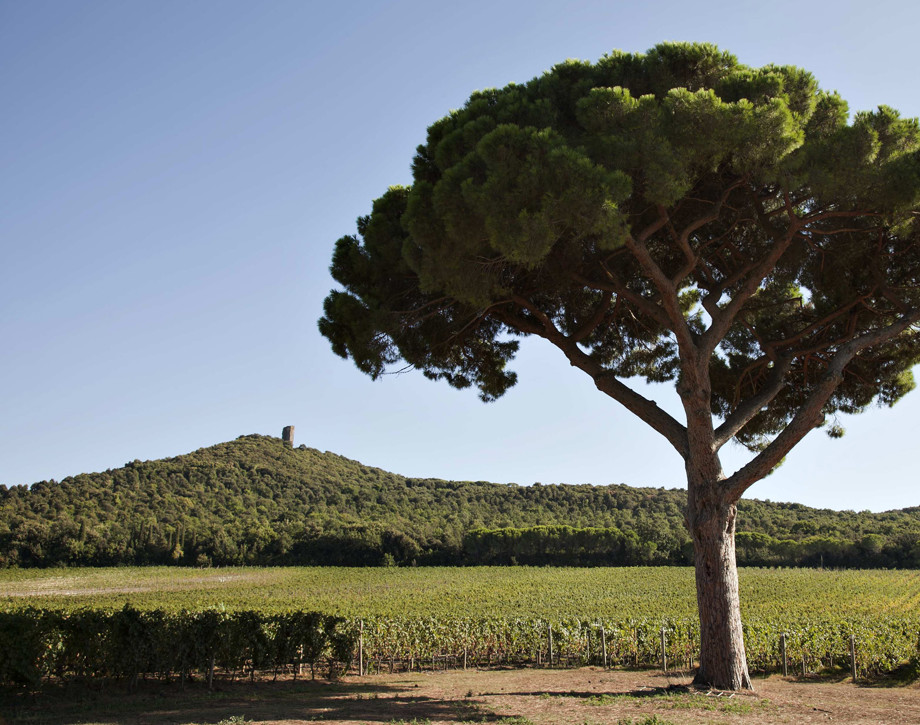Matarocchio

Climate
The 2009 growing season began with a cool and somewhat rainy winter and early spring. Bud break began in early April, the normal period for the season. May, instead, was rainless and with temperatures decisively above period averages the period, while June was cooler and was marked by rains which restored balance to vine growth, giving the plants the necessary energy and vigor to develop - without stress - the new leaves and grape bunches. Summer was particularly hot and virtually without rainfall. High temperatures and hot sirocco winds accelerated the maturation of early-ripening varieties such as Merlot, while the Cabernet Franc showed a better resistance to the heat due to its thicker skin and longer ripening cycle. In mid-September, after two days of rain, temperatures began to significantly fall, to levels below the seasonal norm. This was quite helpful to the later-ripening grapes, among the Cabernet Franc, which completed its ripening at a leisurely pace and achieved much complexity and aromatic fragrance.
Vinification
The grape bunches were picked entirely by hand into 15 kilogram (37.5 pound) packing cases. Once in the cellar, the grapes were carefully selected before destemming, then pressed and the must given a cool (10° centigrade- 50° Fahrenheit), five day, pre-fermentation maceration on its skins in stainless steel tanks. Fermentation temperatures were then allowed to rise to 25° centigrade (77° Fahrenheit) and skin contact lasted over four weeks. At the end of this period the wine went into new 60 gallon French oak barrels of varying provenance where, by the end of the year, it completed its malolactic fermentation. Aging lasted 18 months, during which time each individual barrel was kept under constant observation and only the finest lots were selected for the final blend.
Historical Data
The Guado al Tasso estate is located in the small but prestigious Bolgheri DOC, on the coast of upper Maremma, about one hundred kilometers southwest from Florence. This appellation has a relatively recent history, DOC Bolgheri was approved in 1995 and since then it has become an internationally recognized reference point for the Italian and international winemaking arena. The estate covers an area of about 320 hectares (790 acres) planted with vines, set in a beautiful plain encircled by rolling hillsides known as the "Bolgheri Amphitheatre" due to its particular shape. The vineyards are planted to Cabernet Sauvignon, Merlot, Syrah, Cabernet Franc, Petit Verdot and Vermentino. The nearby sea provides a mild climate with constant breezes that mitigate summer heat and alleviate harsh winter weather, maintaining a clear sky and a high level of sunlight exposure.
Tasting Notes
The nose is very complex, with ripe aromas of plums and powdered chocolate which fuse with balsamic notes and spicy sensations. The palate is dense, with an extraordinarily silky texture, a Cabernet Franc of exceptional elegance and flavor persistence.
Awards
I Vini di Veronelli 2013 Super Tre Stelle Italy A.I.S. "Duemilavini 2013" Guide 5 Grappoli Italy Annuario L. Maroni 90/100 Italy Wine Spectator 91/100 USA Wine Enthusiast 98/100 + Cellar Selection USA Wine Advocate 94/100 USA Antonio Galloni 94/100 USA Falstaff 93/100 Austria James Suckling 97/100 USA Int Wine Cellar 93/100 USA

The Wine
Il Matarocchio was inspired by the desire to create, at the Guado al Tasso estate, a wine that was the maximum expression both of a single grape variety and a single vineyard plot. Il Matarocchio was born precisely from one of these sites and is a wine of great elegance and depth, one which springs exclusively from its source of origin and from a remarkable vintage such as 2007.

Climate
The 2009 growing season began with a cool and somewhat rainy winter and early spring. Bud break began in early April, the normal period for the season. May, instead, was rainless and with temperatures decisively above period averages the period, while June was cooler and was marked by rains which restored balance to vine growth, giving the plants the necessary energy and vigor to develop - without stress - the new leaves and grape bunches. Summer was particularly hot and virtually without rainfall. High temperatures and hot sirocco winds accelerated the maturation of early-ripening varieties such as Merlot, while the Cabernet Franc showed a better resistance to the heat due to its thicker skin and longer ripening cycle. In mid-September, after two days of rain, temperatures began to significantly fall, to levels below the seasonal norm. This was quite helpful to the later-ripening grapes, among the Cabernet Franc, which completed its ripening at a leisurely pace and achieved much complexity and aromatic fragrance.
Vinification
The grape bunches were picked entirely by hand into 15 kilogram (37.5 pound) packing cases. Once in the cellar, the grapes were carefully selected before destemming, then pressed and the must given a cool (10° centigrade- 50° Fahrenheit), five day, pre-fermentation maceration on its skins in stainless steel tanks. Fermentation temperatures were then allowed to rise to 25° centigrade (77° Fahrenheit) and skin contact lasted over four weeks. At the end of this period the wine went into new 60 gallon French oak barrels of varying provenance where, by the end of the year, it completed its malolactic fermentation. Aging lasted 18 months, during which time each individual barrel was kept under constant observation and only the finest lots were selected for the final blend.
Historical Data
The Guado al Tasso estate is located in the small but prestigious Bolgheri DOC, on the coast of upper Maremma, about one hundred kilometers southwest from Florence. This appellation has a relatively recent history, DOC Bolgheri was approved in 1995 and since then it has become an internationally recognized reference point for the Italian and international winemaking arena. The estate covers an area of about 320 hectares (790 acres) planted with vines, set in a beautiful plain encircled by rolling hillsides known as the "Bolgheri Amphitheatre" due to its particular shape. The vineyards are planted to Cabernet Sauvignon, Merlot, Syrah, Cabernet Franc, Petit Verdot and Vermentino. The nearby sea provides a mild climate with constant breezes that mitigate summer heat and alleviate harsh winter weather, maintaining a clear sky and a high level of sunlight exposure.
Tasting Notes
The nose is very complex, with ripe aromas of plums and powdered chocolate which fuse with balsamic notes and spicy sensations. The palate is dense, with an extraordinarily silky texture, a Cabernet Franc of exceptional elegance and flavor persistence.
Awards
I Vini di Veronelli 2013 Super Tre Stelle Italy A.I.S. "Duemilavini 2013" Guide 5 Grappoli Italy Annuario L. Maroni 90/100 Italy Wine Spectator 91/100 USA Wine Enthusiast 98/100 + Cellar Selection USA Wine Advocate 94/100 USA Antonio Galloni 94/100 USA Falstaff 93/100 Austria James Suckling 97/100 USA Int Wine Cellar 93/100 USA

Tenuta Guado al Tasso
The Guado al Tasso estate is located in the small but prestigious Bolgheri DOC, on the coast of upper Maremma, about one hundred kilometers southwest from Florence. This appellation has a relatively recent history, DOC Bolgheri was approved in 1995 and since then it has become an internationally recognized reference point for the Italian and international winemaking arena. The estate covers an area of 320 hectares (790 acres), set in a beautiful plain encircled by rolling hillsides known as the "Bolgheri Amphitheatre" due to its particular shape. The vineyards are planted to Cabernet Sauvignon, Merlot, Syrah, Cabernet Franc, Petit Verdot and Vermentino Nero and Bianco. The nearby sea provides a mild climate with constant breezes that mitigate summer heat and alleviate harsh winter weather, maintaining a clear sky and a high level of sunlight exposure.
















